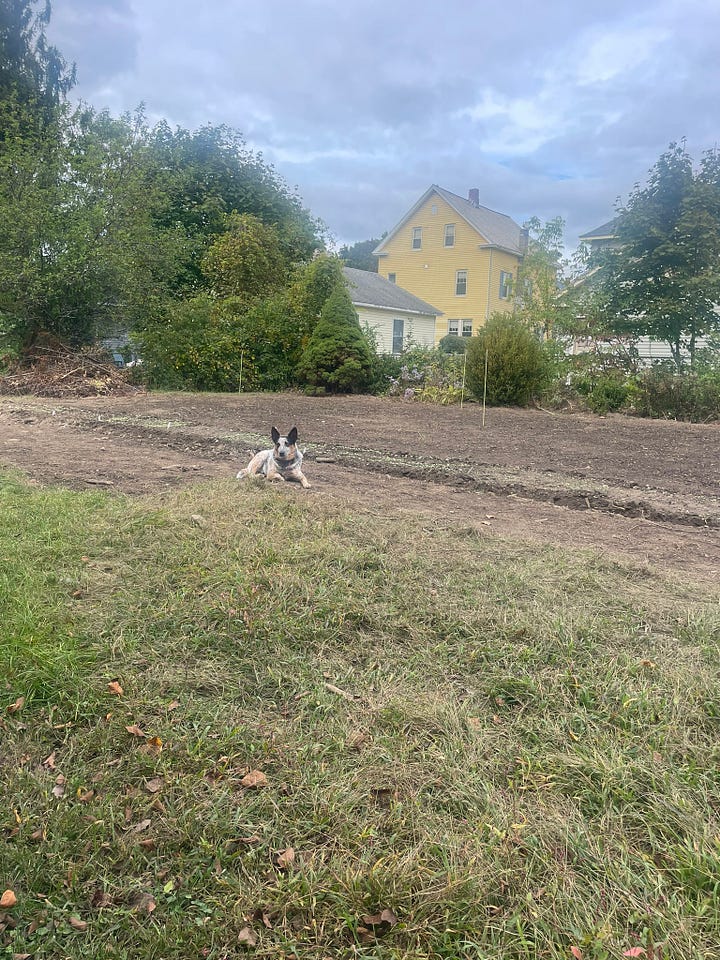
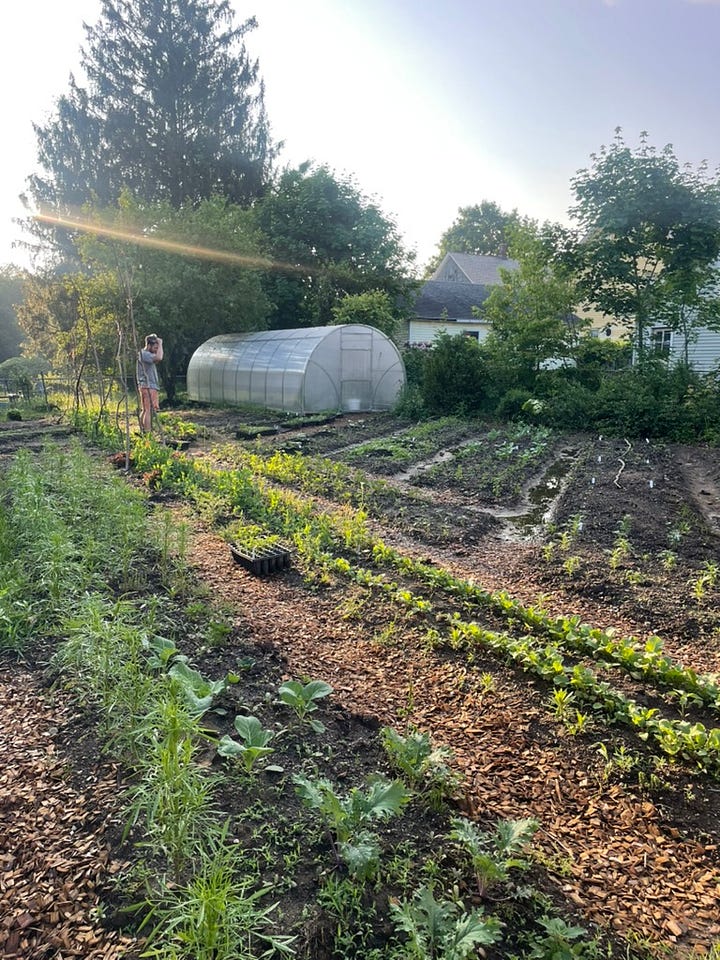
I just got rained out of the front meadow. I was out there pulling weeds and replacing them with Anise Hyssop and Blue Vervain. I guess my rain jacket is at the point of needing to be re-waxed because I had to change my soaked undershirt twice before I called it. Honestly, I probably would have stayed out there if my favorite mailman hadn’t chose that moment to drop off a parcel I’ve been anticipating: linen pants made to my measurements. So now I’m dry, cozy in the new pants, hot cup of tea at the ready, and squeezing my computer in next to all the seeds taking up space on my desk to type this out to you. Here is the scene:
I’m about to dive into the main contents of the newsletter but first I want to share a little news! This summer I am working with Karro Frost, the Conservation Planning Botanist at the Natural Heritage and Endangered Species Program, which is a division of Massachusetts Fisheries and Wildlife. I’m her intern and I’m helping with rare plant and invasive species surveys all over the state of Massachusetts and getting some exposure to ArcGIS mapping. It’s just begun and I’m already enjoying it so much. I’m primarily assisting with field work and taking lots of photos and I plan to share some of those soon. We saw an orchid that is rare in the northeast (Liparis liliifolia) last week. I’m getting used to shooting on a camera that is not an iPhone. Photos to come!
& now for a garden update!!!
Every morning we look out the window of our bedroom and say things like “squashes grew an inch last night” or “wow tulsi is bigger”. This is the fourth (?!) garden Hayden and I have worked on together and we are really honing in on the science and art of garden collaboration. I think this is the most fun we have ever had cultivating land together.
My fellow garden heads might be looking at this and wondering, “why so much bare soil?” And I would nod my head in understanding. Bare soil is the worst of the worst when it comes to soil (and thus garden) health. Everywhere you see bare soil in this garden is a location I have recently direct seeded into and I will wait until the plants are a few inches tall before I mulch around them with straw. Beyond mulching, there is much to do out there:
Create an outdoor shower zone where that white fence is (I’m fantasizing about taking a cold shower after gardening for a few hours on a hot day and emerging refreshed and ready to reapply my sunscreen before I get back to it)
Obtain wood chips to fill in the paths (and inoculate them with wine cap mushrooms)
Make a berry patch in the bed on the other side of the greenhouse
Continue building more rows
Maintain the pumpkin patch I planted in another section of the yard (If successful, I will be so happy this autumn)
Either chip or make biochar with the endless piles of brush we have created (cutting down A LOT of privet) that is now prime rabbit habitat, also known as rabitat
Continue to remove the privet that encircles the permitter of the corner property and replace it with native trees and shrubs with an emphasis on fruit and medicine. Might plant a plum or two as well ;)
Plant monardas, mountain mints, shrubby saint john’s wort and the like along the length of the fence we just had erected to keep bunnies out (except the ones that already live in the yard…) and Grua in
Plant, pot up, and give away the hundreds of plants I still have in pots (I am a greenhouse manager at heart)
Plant sunflowers EVERYWHERE (and immediately cover them with chicken wire because they are the choice snack of every critter in my neighborhood)
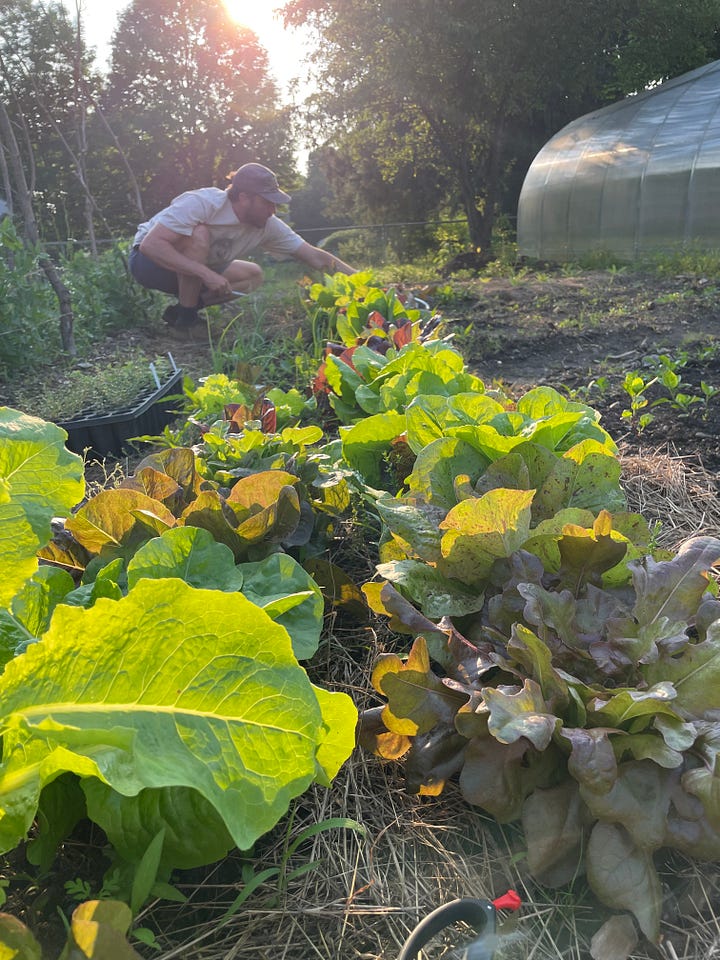
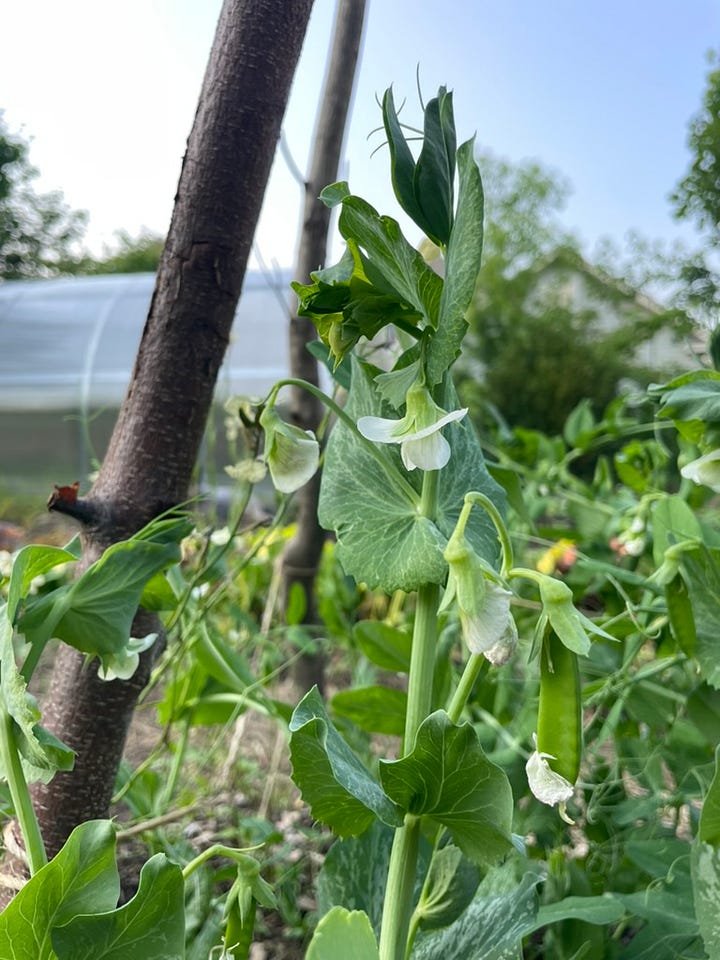
Maybe you are curious about the type of soil we are working with here. It’s a mix. Some is the original soil and some is top soil we had brought in when the pool was replaced. The original soil that is everywhere except the replaced pool zone is: Loamy Sand. See diagram below:

Never have I worked with such well drained soil. I’m sending out soil samples to UMass to learn the precise composition of the loamy sand soil as well as the brought in top soil. In the meantime we are adding lots of compost and nutrients which has made the plants and soil productive and seemingly happy so far. If you want to know what the soil type is where you live: This is a fun website to play around with and learn all about it. I’m taking a soil science class this autumn and I can’t wait to get extremely granular about all of this.
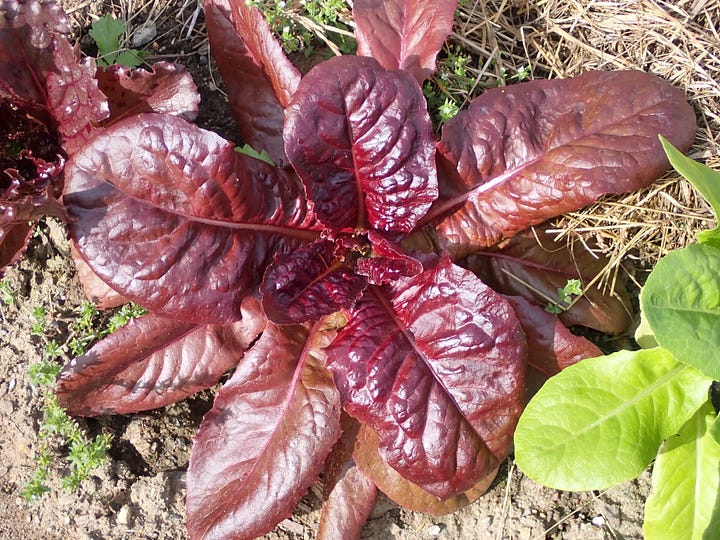
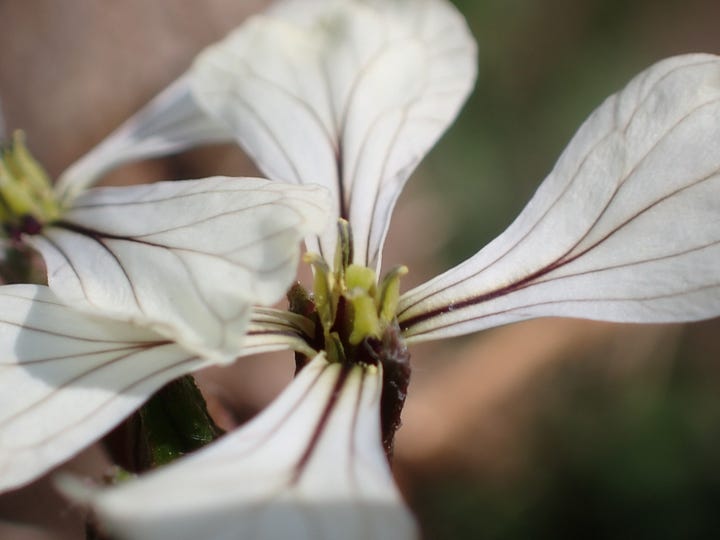
About the contents of this new garden: It is a good mix of vegetables, herbs, dye plants, and flowers for flowers sake. Our garden species come from North America and all over the world but we try to keep our landscaping plants native. I have so much more to say about native plants since observing the intersection of endangered native plants in the wild and seeing how easily they are over taken by escaped invasive plants from the horticultural trade. Expect a future newsletter on that. But back to the garden - Our hot house is full of nightshades: tomatoes, eggplants, and peppers. Genovese basil interplanted among them. A row of greens. The back half of the greenhouses is shaded by an apple tree we are not ready to cut down. I’m planning to use that space to pot up and grow out some of my native plant species that prefer dappled light.
In the garden rows outside of the greenhouse: Most rows have a long season crop with a short season crop interplanted around it. By the time the long season crop is about to shade out the short season crop, it is time to harvest the short season crop. Among these pairs: Hopi Black Sunflower (long season crop) and Arugula (short season crop), Corn (long season crop) and Lettuce (short season crop), Peppers (long season crop) and Radishes (short season crop), Japanese Indigo (long season crop) and Tatsoi (short season crop).
A few emails back I sent out a full list of everything we are growing this season. In excel spreadsheet form, no less! In a few weeks I will catalogue everything growing out there.
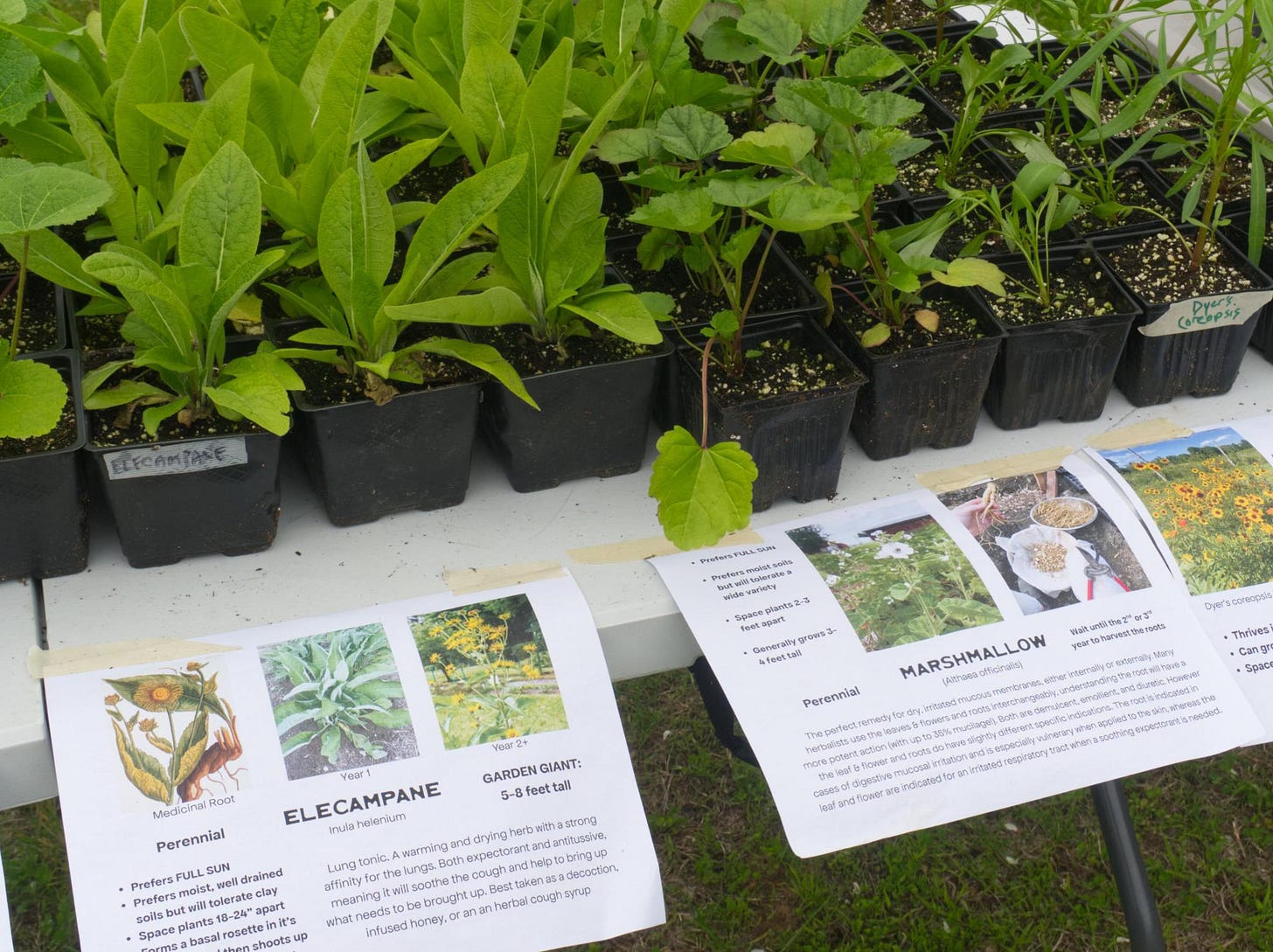

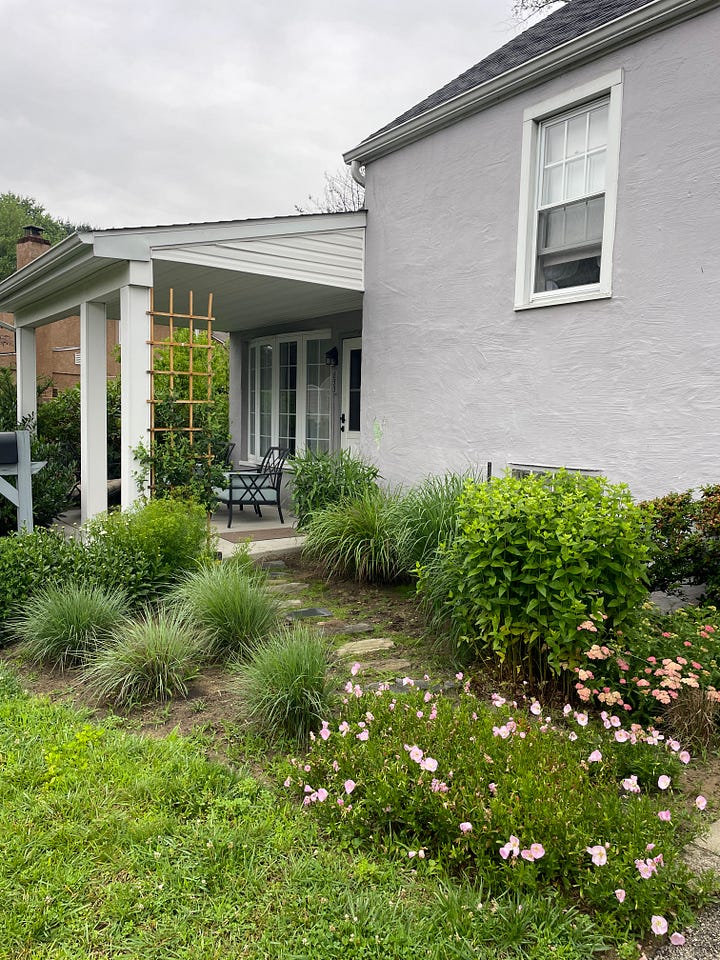
I was in Philadelphia recently to celebrate my mom’s birthday and I had to snap some photos of the meadow inspired garden I planted in her front yard last July during a heat wave. (Not the best time to plant a garden, but sometimes there is no better time than the present.) It is coming in so well!! I plugged in Anise Hyssop and Thyme plants in a few gaps, but it was already pretty filled out. Shout out to: Little and Big Bluestem, Narrow and Broad leaved Mountain mint, Switchgrass, Northern Sea Oats, and Coral Honeysuckle.
I just flung open the door from my studio onto the back deck and it seems the rain has stopped. Everything is soaked. Cedar waxwings are trilling and chimney swifts are twittering. Thanks for sitting out the rain storm with me. I’m going to go make some dinner now (clam pasta with roasted beats and salad from the garden). If you liked this newsletter, let a girl (me) know! I appreciate your engagement and replies so much <3
Geraldine





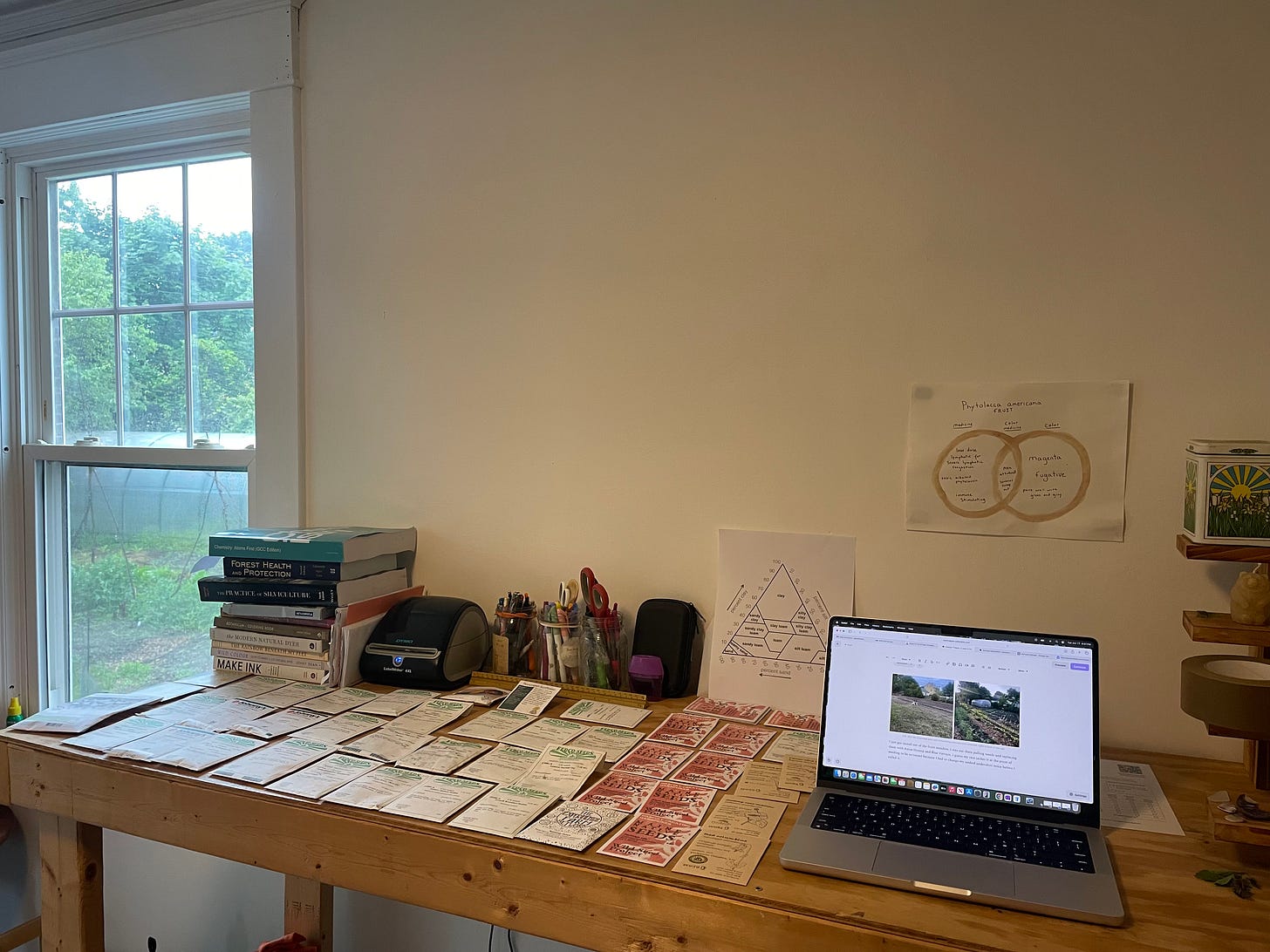

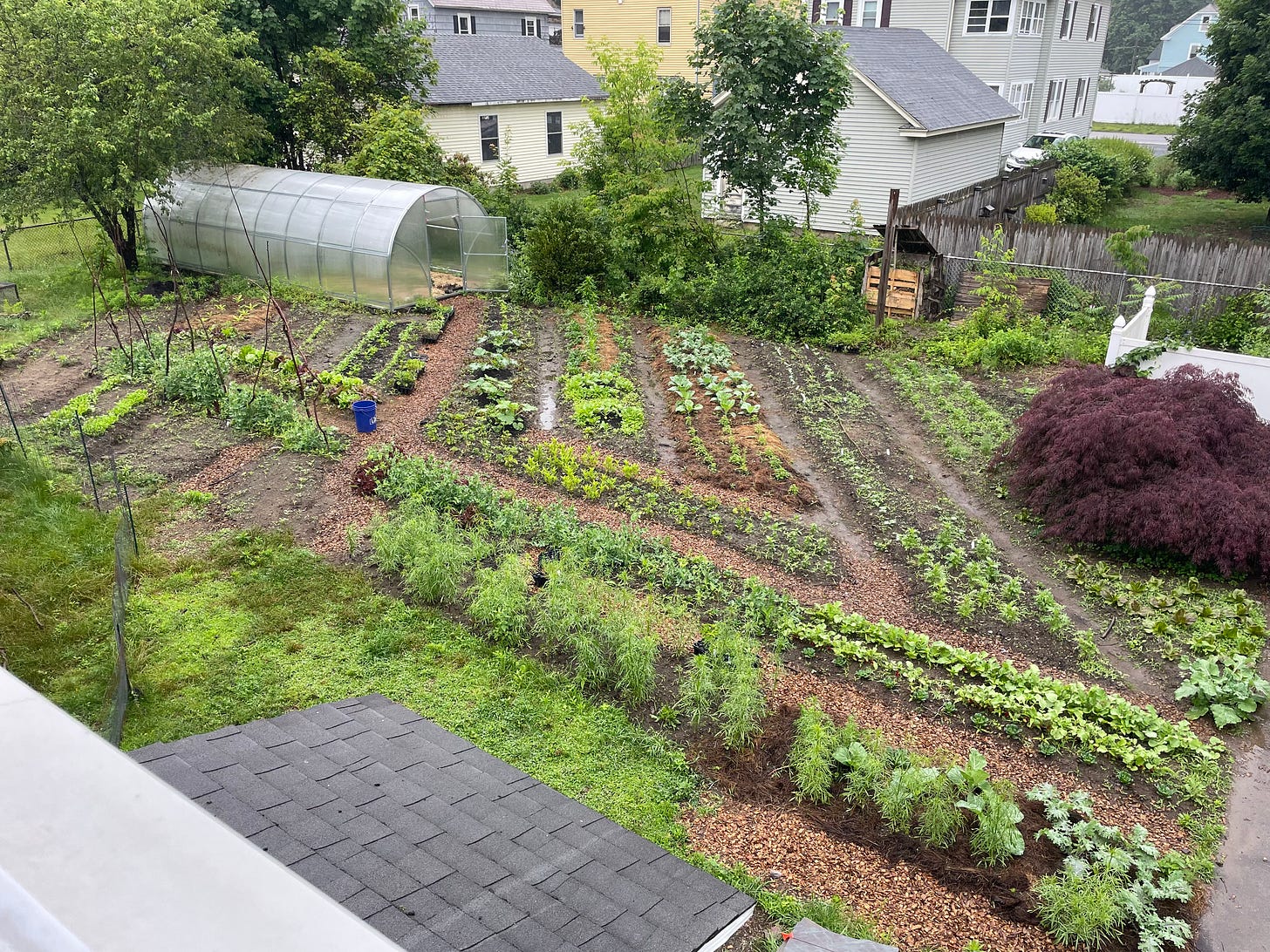
I love these letters. It really is wild that this beautiful garden exists where there was a pool!!!
I love getting a glimpse into your world which has several parallels/intersections to mine but is so different still (beekeeper, herbal tea lover, momma to a year old, trying to get back in the garden/writing again). And you are a wonderful writer, I always look forward to reading your work. & yr writing inspires to try to write similar reflections on what’s going on in my world. Sending love from NY 💛